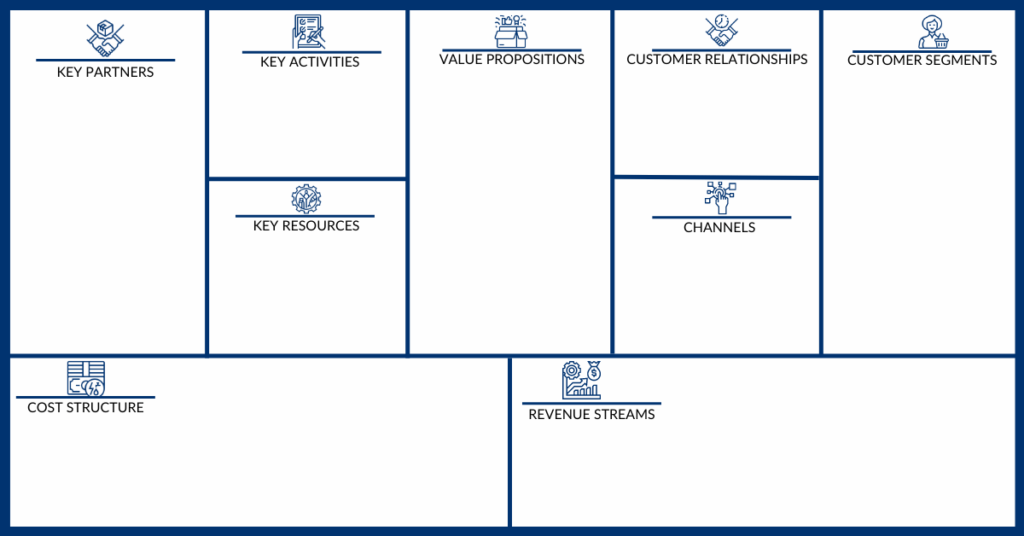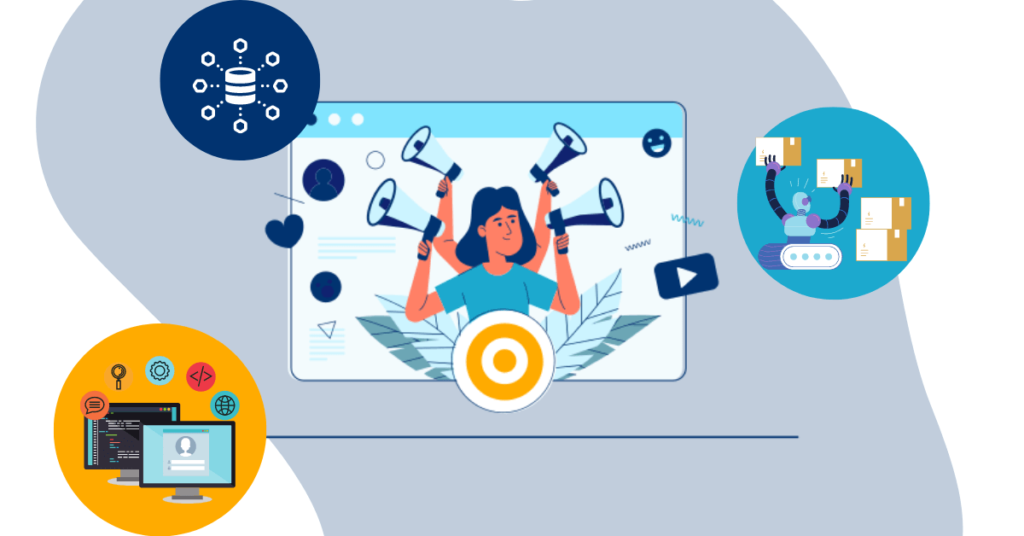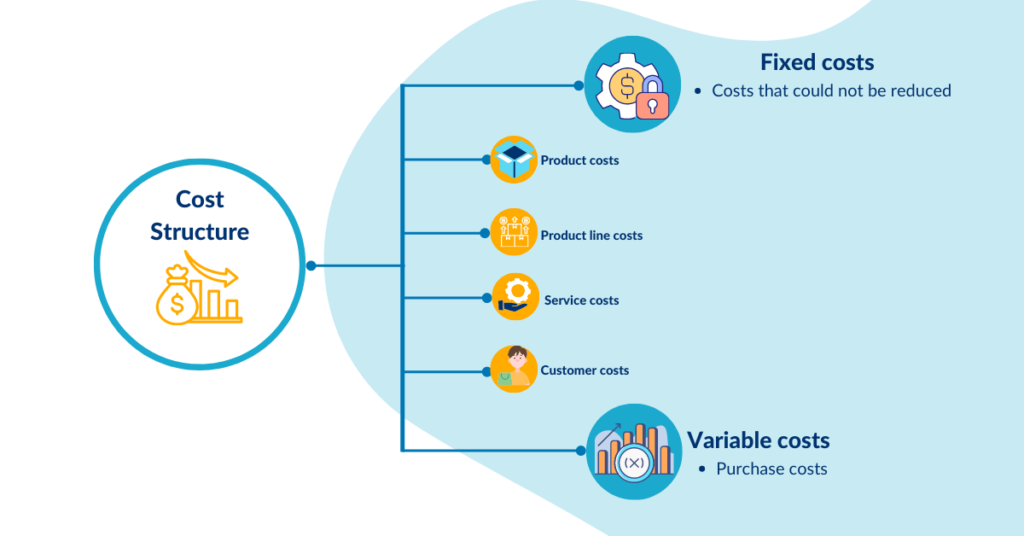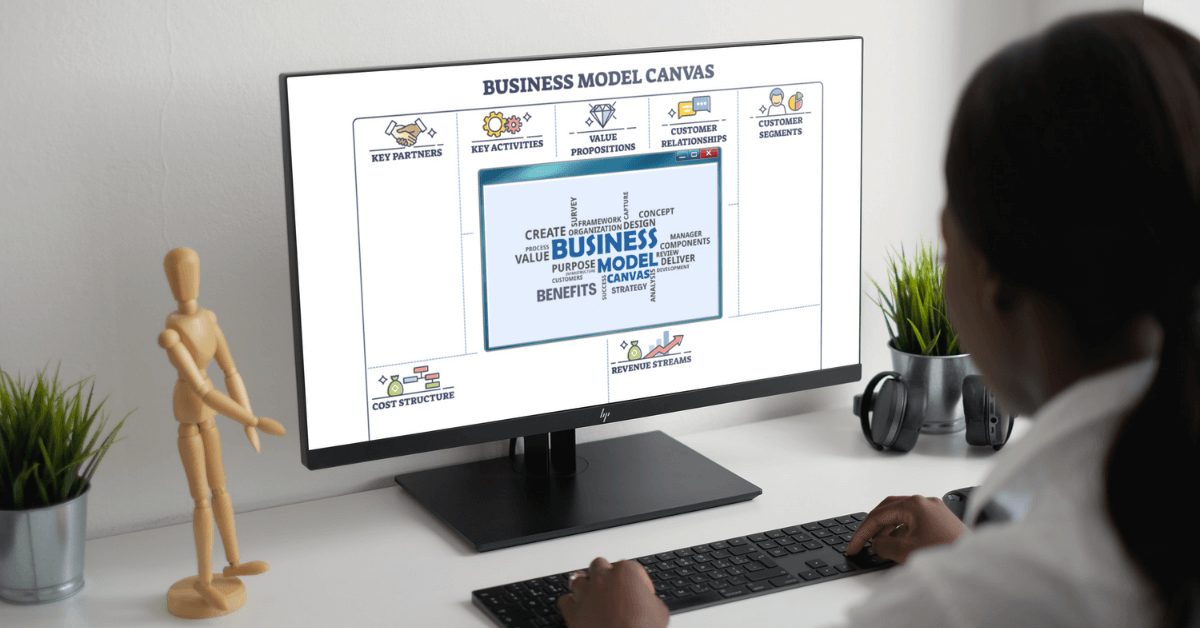Business model canvas. I’m sure you have heard about it here and there. But what exactly is a business model canvas? What are the key benefits of creating a business model canvas?
The Business Model Canvas is a powerful tool for startups and business owners. It enables you to visualize, design & reinvent your company’s market strategy in one easy step! The Swiss theorist Alexander Osterwalder developed this innovative approach which helps entrepreneurs identify their unique value proposition as well as where they need focus efforts when starting out or growing an existing enterprise – all without having any prior knowledge about how different components come together at first glance
In this article we are going to discuss 8 key benefits of creating a business model canvas.
Are you ready to get started? Let’s go then!
1. The Business Model Canvas is focused
The Business Model Canvas is a powerful tool for understanding how your company makes and gets things done. It helps you identify the areas that need improvement so it can be more successful, as well as understand what competitors are up against when they enter into the market with their products or services offerings – providing an edge over them in terms of knowledge-based SE architable platforms such as Google Search Engine Optimization (SEO).
2. Speed & Agility
The next benefit of creating a business model canvas is the speed & agility it offers.
The BMC has a simple and focused construction that can be quickly tested with customers. It’s an ever-evolving document, which encourages planning through verification before iteration to improve it over time in order for architects and engineers alike – no matter their discipline or field of expertise-to make tangible progress towards solving real world problems by employing design thinking skills.

The key principles behind this type architecture–the Building Information Modeling (BIM) approach/toolset-, are fluidity & progressive changeability; concentrating on quality rather than quantity when determining what goes into each block within your building models because at any point you’re only guessing until something gets proved out via trial.
3. Revenue Streams
This is all about how your business makes money. What are your customers willing to pay for and how does that add up to your revenue? For instance, if you are a coach, are you offering online training materials, 1:1 coaching sessions, for your services?
Before you can start making money with your business, you need to decide what revenue streams you will pursue. There are a number of ways to make money with a business, and the best way for you will depend on the products or services you offer.
You could pursue a service-based revenue model, providing expertise or consulting services to clients. Once you’ve decided how you’re going to make money with your business, you can start putting together a plan to make it happen. With a clear understanding of your revenue streams, you’ll be well on your way to making money with your business.
This is a very important thing in the business model canvas because, It is all about how you are planning to make money with your business!
4. Target customer needs
The fourth key benefit of creating a business model canvas is that it targets customer needs.
According to chimera, the biggest reason for startup failure is “Product/Market fit” and not the product itself. Too often we forget this and direct our energy on building an awesome product. “Build and they will come” is a dying mantra. The business model canvas forces you to think beyond your product. When you envision how you will sell your product, what type of resources you need as well the different customer segments you can serve, the business becomes lucid. Documenting it gives you clarity when you talk to your customers.
5. Channels
There are various ways you can deliver services to customers, how the channels are integrated will play a big role in how successful your business is. There are various ways to integrate your channels, some common methods are through APIs, webhooks, or direct integrations.

You need to consider how you will get information from one channel to the other, how customers will be able to use your services across channels, and how you will track data and activity between channels.
Channel integration is a key factor in providing a seamless customer experience and should be given careful thought and planning. When done correctly, it can provide many benefits such as increased customer satisfaction, higher conversion rates, and improved operational efficiency.
Sounds awesome right?
6. Reduces the risk of failure
The Business Model Canvas helps you to think through the execution side of your business and comes up with a clear strategy for marketing, positioning statements as well as sales. The more specific details on how each part works together will give an edge over competitors who are immersed in lengthy pages about their plans.
A great way often times we neglecting or forgetting otherwise crucial tasks such at this edutaining exercise which requires us only brief moments but still captures everything necessary when developing any type product/service
It provides a unique perspective on exactly how to take your idea from concept through execution. Connecting the dots between value proposition, customer segments and revenue streams is an excellent way not only for generating marketing strategy but also positioning statements that will help you reach potential clients with relevant offers they’ll love!
7. Cost Structure
The last key benefit of creating a business model canvas is the financial structure. What the process of going in and out of costs for your business to run. You can manage costs efficiently in order to minimize expenses.
Cost structure will help you define all the costs and expenses that your business will incur. Are your costs fixed or variable? You should ask yourself how do your key activities drive your cost structure? If there are any cost components that are not directly linked to your key activities, I would go back and see if these costs are really necessary.
And now you are done with mapping out the first version of your business model canvas.

But remember this is a living and breathing document that you can update as you are creating your business. If one thing does not work, you get to test another and update your business model canvas, so you always have a one-page view into your most important business activities you need to focus on.
8. Ability to Iterate Quickly
The Business Model Canvas is a great way to systematically model changes and analyze the impacts of those proposed shifts. It’s especially useful for teams, when analyzing different ideas or options; because it allows you can print out copies which will come in handy during strategy sessions! Teams often use sticky notes on centrally placed spots around their workspace so that they’re easily able see how each new option may affect other aspects within your company’s current operations – this helps prevent any potential problems before they arise by allowing people ample time explore all possibilities without getting too far ahead with one particular plan prematurely
Conclusion
So in this article we analyzed the business model canvas and its key benefits. By now you should be able to give a much clearer picture about using the business model canvas. If you take advantage of it, it can become a great advantage for your business.
The business model canvas is a great way to map out your business, and it can be used for any type of company. There are many benefits to using the BMC, such as reducing the risk of failure, better communication among team members, and increased innovation.
By now you should be able to give a much clearer picture about using the business model canvas. If you take advantage of it, it can become a great advantage for your business
If you’re not using the BMC yet, I highly recommend giving it a try!
What has been your experience with the BMC? Let me know in the comments below or feel free to contact me for more information.






0 Comments